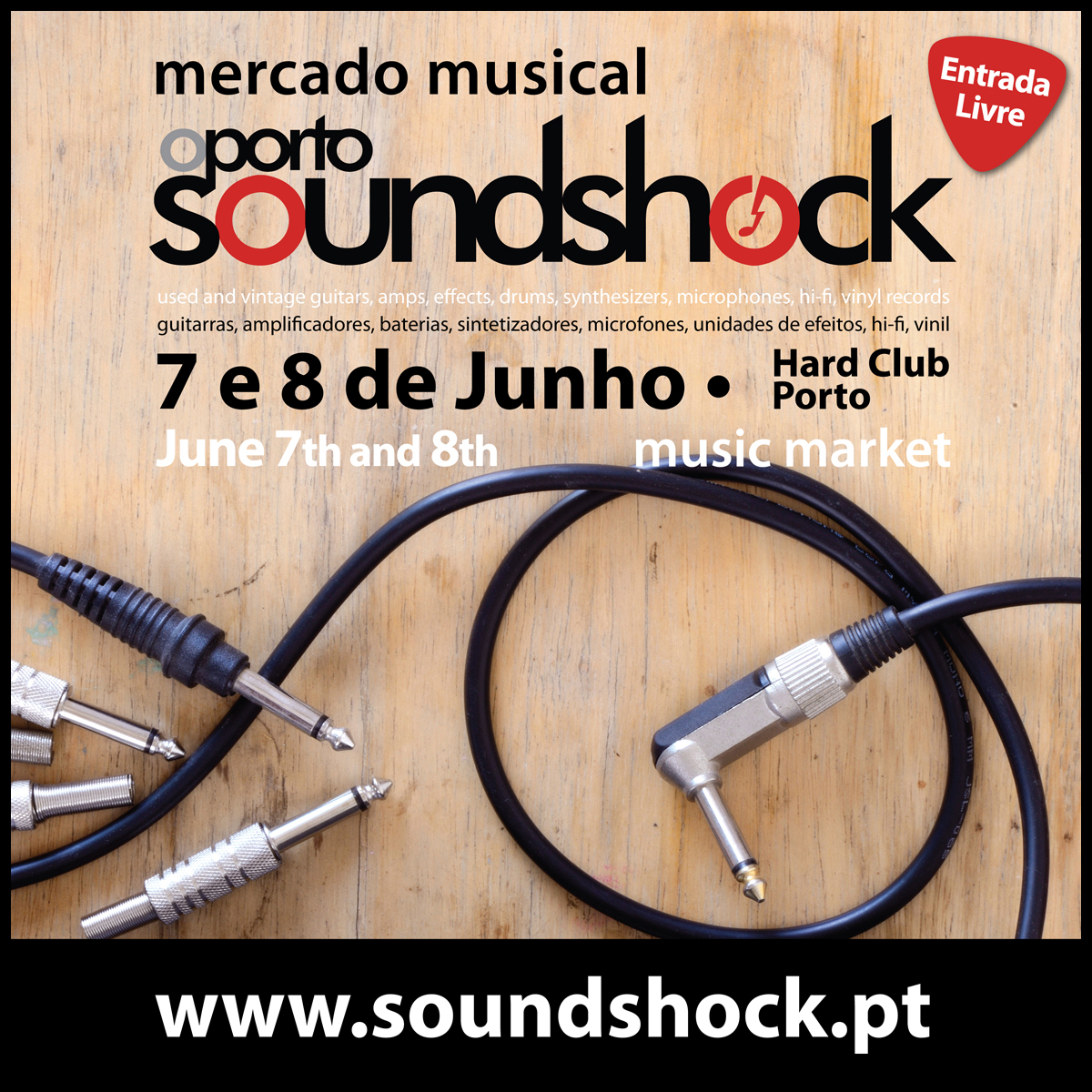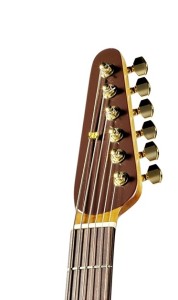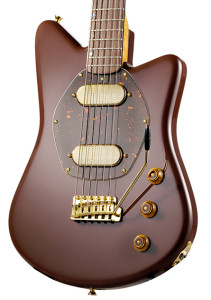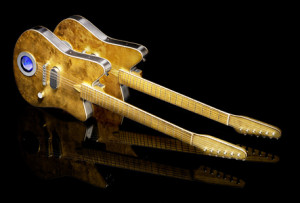In Oct 2010 we had the pleasure of attending the Luthiers Invitational Showcase located in beautiful Woodstock, NY.
Here we met with alot of the greatest luthiers from US and had a splendid time. Here is an interview with show founder, Baker Rorick on the upcoming 2011 show.
Hi Baker, thank you for taking your time to speak to Vintage&Rare on the forthcoming Woodstock Invitational show in Oct 2011.
Could you give us a brief history of Woodstock Invitational Luthiers Showcase, and how the show originated?
As a steel-string journalist, I was working on an article about Ken Parker Archtops in 2008. At the time, Ken’s shop was only an hour away from Woodstock, and he asked me to help him arrange a showing of his radical new guitars to the Woodstock musicians and builders community. Some other instrument makers asked to be included, and then we invited a few more, and assembled a small group, 8 or 9 luthiers. Cooperative effort, everybody pitched in a $100 each and we rented The Colony Café for a Saturday afternoon in October for a private party, show & tell, meet the makers, play some guitars, hear some music, fresh apple cider and pumpkin pie. The party was by invitation only, thus the Woodstock Invitational Luthiers Showcase. We expected 40 or 50 people to come, over 100 showed up. Our local paper The Woodstock Times published a 2-page color article about it afterwards, and people started asking me if would be an annual thing, maybe with concerts and clinics and workshops and open to the public? With thirty years of experience in the guitar business, some connections and good will, and no real idea of what I was getting myself into, I decided to give it a try.
At January 2009 Winter NAMM Show in Anaheim I floated the idea around and met with potential sponsors. Michael Gurian introduced me to Tom Ribbecke, a founder of the original Healdsburg Guitar Festival, who said, “count me in!” Dick Boak of Martin Guitars encouraged me to join ASIA, the Association of Stringed Instrument Artisans, publishers of Guitarmaker Magazine. In June 2009 I attended ASIA Symposium, four days of builders workshops and colloquia in East Stroudsburg, Pennsylvania. Ken Parker introduced me to Julius Borges, founder of the Newport Guitar Festival, and Linda Manzer and many other great builders I knew only by reputation, who were all supportive. I introduced myself to John Monteleone and asked if he would consider showing at a small event in Woodstock, maybe 20 exhibitors? He said “yes”! My thought was to try for something different, small, select, a party and celebration of the luthiers art and the music inspired by the instruments.
A few weeks later I attended a concert by Laurence Juber in Woodstock, and was telling a friend (a fine jazz guitarist with a fine collection of fine guitars by notable makers) about my plans and who was getting involved, and the woman he was sitting with said, “You’re doing what, with who? This is my life! How can I help?” And so I met Sharon Klein, a singer/songwriter, classical and fingerstyle guitarist who also plays lute and oud, with her own collection of handmade acoustic instruments by notable makers, and she became my Production Partner and Music Coordinator. Sharon has toured extensively in the Middle East, and she attracted the interest of Faruk Turunz, the master oud maker, and Suleyman Aslan, a maker of baglamas and flamenco guitars, who came from Istanbul, Turkey to show their instruments in America for the first time. With their participation we were able to get Ara Dinkjian and Haig Manoukian and other great American Middle Eastern musicians to play concerts, promoting musical diversity and setting the Woodstock Invitational apart from the other handmade acoustic shows that usually only feature fingerstyle guitarists and a little jazz. Sharon Klein’s wide-ranging network also brought in classical and flamenco builders and performers – including her old friend Vicki Genfan, and she also insisted that we present instructional clinics and workshops, and she made it all work. The Bearsville Theater seemed the perfect small venue, with room for a couple dozen exhibitors in the theater, and performance space in the adjoining Lounge, and we set the date again for the third weekend in October, 2009, resplendent in the full autumn color of the Catskill Mountains. Jeff Doctorow brought close to a dozen significant instruments from his large collection for a Special Exhibit, including vintage harp guitars and the multiple-neck 42-string Pikasso that Linda Manzer had built for the late Scott Chinery.
People came! They bought guitars! Faruk Turunz sold every oud he had brought. The music was fantastic, luthier mini-concerts and special appearances, high-points being Vicki Genfan, Ara Dinkjian Trio with Tamer Pirnarbasi on Turkish kanun, hard be-bop jazz guitar by Eddie Diehl and Ilya Lushtak, and Larry Campbell & Teresa Williams closing the Showcase Sunday evening with Happy Traum and John Sebastian sitting in, magic, and only in Woodstock. All the luthiers said “How are you going to make it bigger? Please don’t move it; we love the venue.”
So for 2010 we added a second venue next door in Todd Rundgren’s old Utopia Soundstage for vendors, sponsors and some overflow luthiers, and another Special Exhibit. Tonewood dealers and tool and parts suppliers did particularly well. We presented a “String Sampler” concert featuring Vicki Genfan, Ara Dinkjian Trio with Tamer Pinarbasi, Bill Keith & Mark Patton, and Vic Juris. We were able to get Frank Vignola and Vinny Raniolo to play for an hour Sunday afternoon, and they brought Julian Lage along with them and tore the roof off the place! Woodstock resident Steve Earle showed up and bought a radical new nylon-string flamenco guitar from Michihiro Matsuda. And once again, Larry & Teresa closed the show, this time with Happy Traum and Doug Wamble sitting in.
VintageandRare CEO Nicolai with master luthier John Monteleone at the 2010 show
What would you consider to be the shows focus and direction?
The Show’s focus is HANDMADE, ACOUSTIC guitars and stringed instruments, by only the best contemporary builders. No factory guitars, no solidbody electric guitars. The other main focus is the builders and players community, the music made that inspires the builders and the musicians who get to play their instruments. It’s about the hang and the vibe. We also try to provide musical and instrumental diversity; not just steel-string fingerstyle folk blues Celtic and DADGAD, but Jazz, Middle Eastern, African, Latin, and anything wonderful we can find that no-one’s ever heard before.
What do you envision for the future growth of the W.I.L.S?
I’m growing it slowly, learning by doing, taking advantage of opportunities presented more than planning ahead. It’s incredibly fluid. I’m gratified by the success so far; the venues and location and time of year and proximity are all factors, especially the intimacy of the thing. I don’t want to move it to a convention center or something to make it larger and destroy the vibe.
How many builders do you anticipate exhibiting at this years show? Please tell us a bit about the range of guitars that will be on showcase at the show?
We’ve got about 35 luthiers and 15 vendors and sponsors exhibiting this year; luthiers only in the Bearsville Theater, more luthiers and vendors and sponsors in the Utopia Soundstage, including The C.F. Martin Custom Shop this year, very exciting.
Archtops, Classical and Flamenco and steel-string flattops, hybrids, cross-over guitars, 12-string baritones, high-tuned unison 12-string mando/guitars, ukuleles, mandolins, claw-hammer banjos, African koras, mbiras, ndungus, and cookie-tin diddley bows. I’m hoping that Michi Matsuda will bring his radical, experimental Cubist-deconstruction ukulele. Oh, yeah, and harp guitars, Michel Pellerin from Quebec, and Linda Manzer, whose 42-string Pikasso made for Scott Chinery will be there.
Any special attractions you have planned for this years show?
This year we’re hosting Kinobe & The African Sensation. Kinobe is a young Ugandan kora player and maker, and an international touring artist. David MacCubbin, a fine steel-string flattop guitar maker from Maryland, has been co-building some contemporary koras with Kinobe while Kinobe and two of his brothers are in the USA . We hooked up. Kinobe will be playing as part of our String Sampler kick-off concert, with Frank Vignola & Vinny Raniolo Guitar Duet and The American Guitar masters – Larry Pattis & Peter Janson. Plus, he and his brothers will be showing and playing some of their instruments (the brothers make and play n’dungus, mbiras and other traditional African stringed things) at the Showcase itself.
And there is always a “Special Exhibit of Significant Historic, Vintage and Contemporary Guitars and Stringed Instruments”, loaned by collector and authority Jeff Doctorow and other collectors and institutions: North American guitars from the early 1800s to the present, including harp-guitars, Sympitars, cello-guitars, oddities and innovations, plus antique and vintage lutes, ouds and stringed-exotica.
What has the public attendance been for past shows? What do you anticipate for attendance at this years show?
Miraculously, we had close to 1500 paid attendees last year. I expect the same or maybe more again in 2011.
Three Tom Ribbecky guitars on display
Thank you Baker for taking the time to talk to us. Hope all goes well with this years show.





